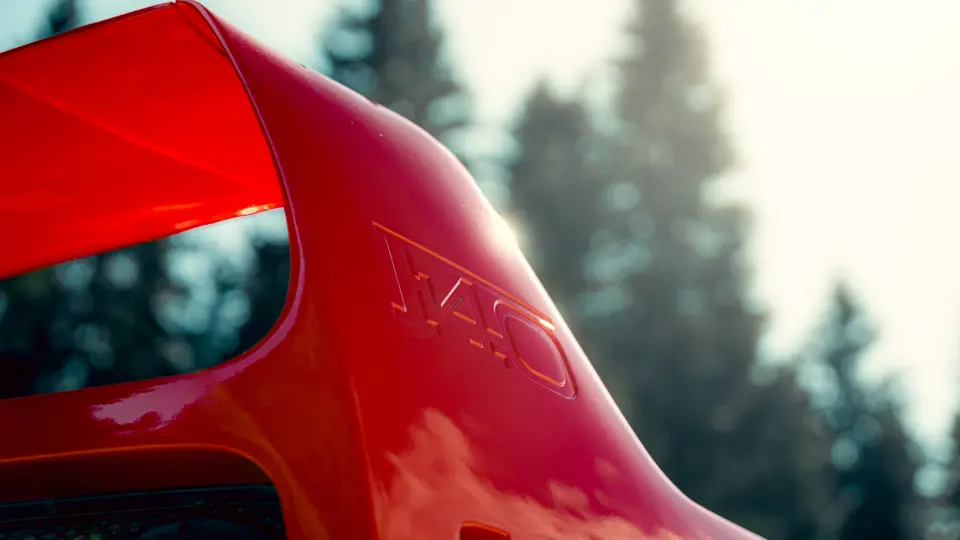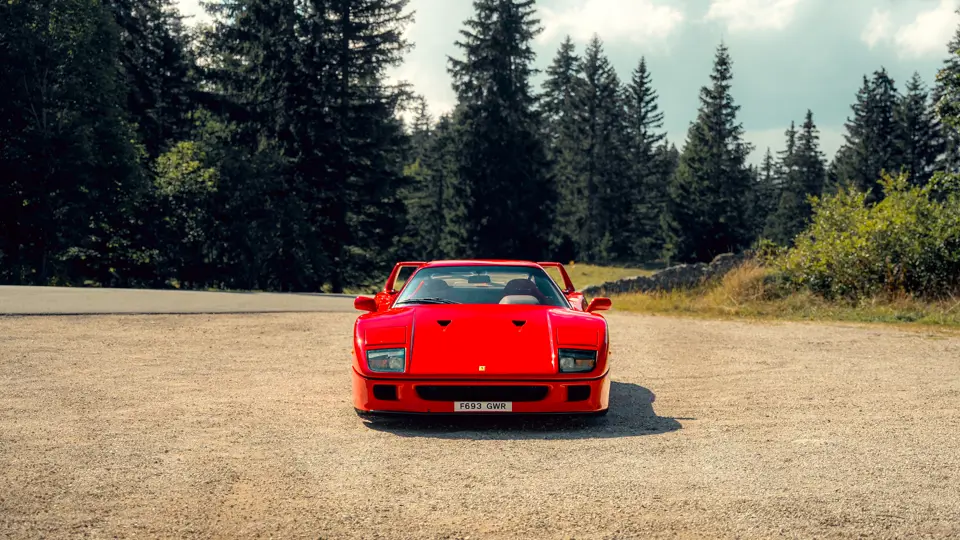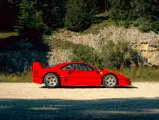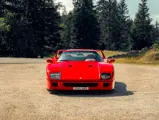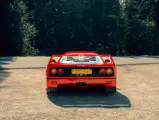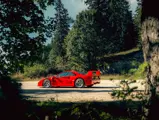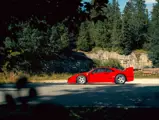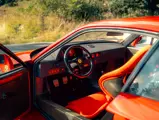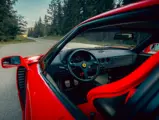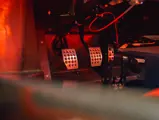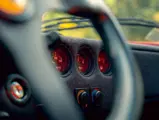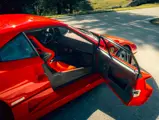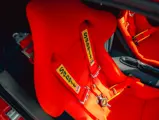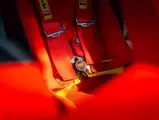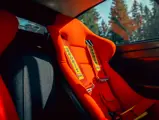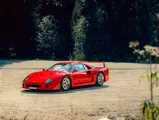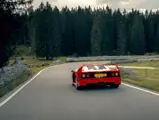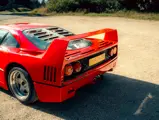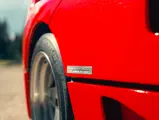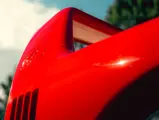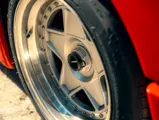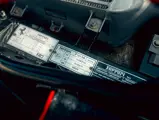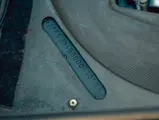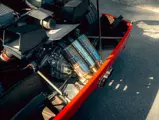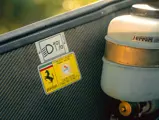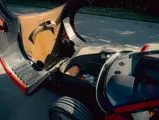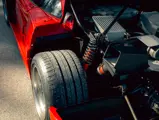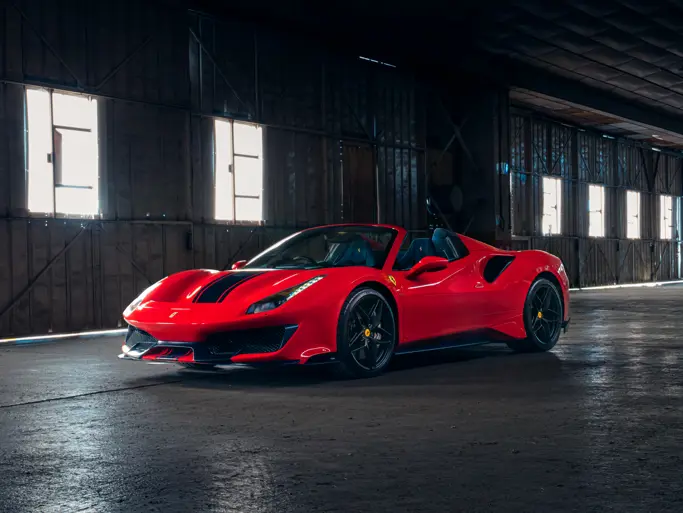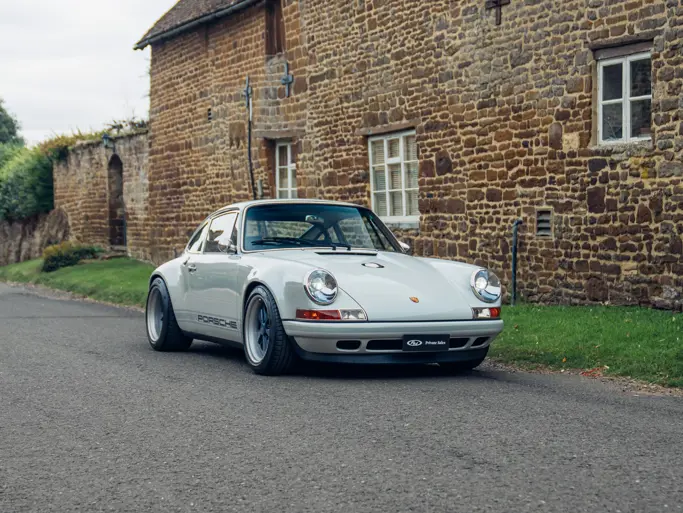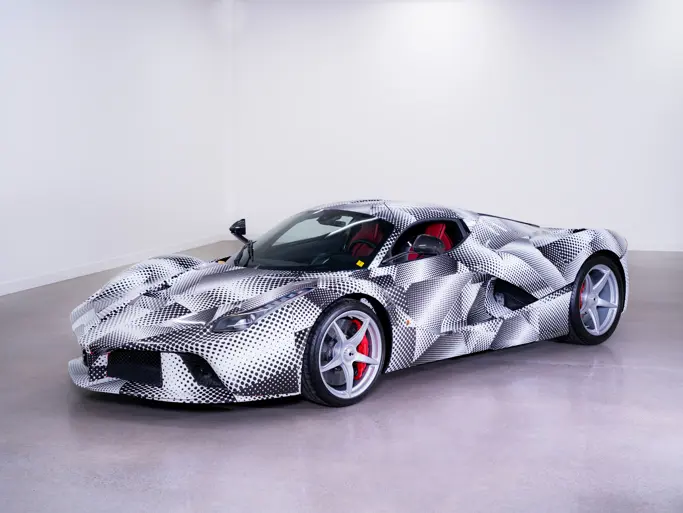
1989 Ferrari F40
{{lr.item.text}}
£1,973,750 GBP | Sold
{{bidding.lot.reserveStatusFormatted}}
- One of just 1,311 F40s believed to have been constructed between 1987 and 1992
- Desirable non-adjustable suspension, non-catalytic converter, European market example
- Finished in its original colour combination of Rosso Corsa with Stoffa Vigogna interior
- Recorded odometer reading of just 20,921 kilometres at the time of cataloguing
- Offered for the first time in 15 years, the present custodian having owned the car since 2009
- Documented maintenance carried out by Modena Cars SA, including renewal of the fuel cells and a comprehensive service in May 2024
- Ferrari Classiche certified in December 2016; confirms matching-numbers chassis, engine, and gearbox
Throughout Ferrari’s illustrious history, few—if any—models have encapsulated the mystique of the Prancing Horse quite as succinctly as the F40. Outrageous in appearance, uncompromising in philosophy, and otherworldly in performance, the F40 was everything a Ferrari should be, offering arguably the most visceral and intense driving experience since that of the revered 250 GTO a quarter of a century previously.
Curiously, the project’s origins were rather more convoluted than its subsequent success might suggest. The tragic 1986 World Rally Championship season had led to the abandonment of the FIA’s Group B regulations, leaving Ferrari with several race-developed, yet newly redundant, 288 GTO Evoluzione chassis. Fortuitously, rather than closing the doors on the project, the decision was taken to use it as the basis of a new standard-setting road car; one which would also serve as a centrepiece for Ferrari’s impending 40th anniversary celebrations.
Both the 288 GTO’s twin-turbo V-8 engine and chassis were retained for the new car, albeit with the former strengthened by significant cross-bracing and bonded composite inserts, and the latter re-engineered in marginally enlarged 2.9-litre Tipo F120A form. Dramatic Pininfarina-styled bodywork was fashioned entirely from composite materials—a first for Ferrari—while a spartan interior with only minimal concessions to comfort enabled the car’s weight to be kept to barely 1,200 kilograms.
Producing some 478 horsepower at 7,000 rpm, the F40’s enviable power-to-weight ratio permitted 60 mph to be reached in approximately four seconds, with a top speed of 201 mph. The latter figure rendered it the fastest production car in the world at the time. Duly unveiled to the public on 21 July 1987, the F40’s place in Maranello folklore was further cemented by being the final Ferrari road car design presided over by Enzo Ferrari himself, prior to his death the following year.
Configured in highly desirable early series, European market, “non-cat, non-adjust” specification, chassis 83052 departed Ferrari’s fabled Maranello factory on 25 October 1989, destined for Modenese Ferrari agents Motor S.p.A. The following month, it was acquired by first owners Italleasing S.p.A of Rapallo, near Genoa. The car was duly allocated the Italian registration mark of “GE 876251”.
By the early 1990s, chassis 83052 had passed into French hands—gaining the Parisian licence plate “40 KRL 75” in the process—although it departed continental European shores for the first time in 1997, arriving in the UK late that year. As part of the UK registration application, the car underwent a first MoT inspection on 8 December 1997, at which point it still retained its French registration mark and displayed a recorded odometer reading of just 2,866 kilometres. UK registration was granted on 24 February 1998, with the car being acquired by Allen Grove in June 1998 and re-registered as “AYY 5” later that year.
Mr Grove appears to have owned chassis 83052 only briefly, opting to sell the car in 2000—via renowned F40 experts DK Engineering of Chorleywood, Hertfordshire—to a Mr S Johnson of Biddenham, Bedfordshire. Significantly, in June 2001, chassis 83052 was one of just two F40s invited to enter the prestigious Ferrari Owners’ Club Concours d’Elegance, held in London’s Bond Street. Other landmark models present at the event included a 375 Mille Miglia, 212E Montagna, 712 CanAm, and three 250 GT SWB Berlinettas.
Throughout Mr Johnson’s ownership, the F40 was fastidiously maintained by DK Engineering, in accordance with Ferrari’s recommended 5,000-kilometre service schedule. In June 2001, it benefitted from new fuel cells and cambelts, while the following year—with the car by now bearing the registration mark “F693 GWR” —a new clutch was fitted. Routine services were carried out by DK Engineering in 2004, 2006, and 2007—at 13,168, 14,701, and 16,100 kilometres respectively—while in July 2008, a major service was embarked upon, encompassing a further clutch replacement, at a cost of some £10,052. Significantly, during Mr Johnson’s period of ownership, the longest interval between services was barely 2,100 kilometres; a figure equating to a mere 19 months.
Although used only sparingly by Mr Johnson, the Ferrari occasionally appeared in printed media, taking centre stage in a feature article in the June 2007 edition of Classic Cars magazine entitled “60 Years of Ferrari Greats”. Appearing alongside its progenitors the 195 Inter, 250 SWB, 275 GTB/4, 365 GTB/4 Daytona, and 512 BB, the article emphasised the F40’s phenomenal performance capability, while likening the model to a “latter-day 250 GTO; for both wear their Ferrari racing heart on their sleeve”.
In August 2009—after some nine years of exhilarating ownership—Mr Johnson felt that the time had come to part with the F40, whereupon it joined the collection of the current consignor. Displaying an odometer reading of just 18,350 kilometres at this point of purchase, the car’s modest use has continued, with servicing responsibilities being carried out by Geneva-based Ferrari and Maserati concessionaires, Modena Cars SA. Here, the F40 benefitted from the fitment of new fuel cells in March 2012 and a new original stock silencer box in 2016. The fuel cells were renewed once again—in conjunction with a major service, including the renewal of the cam belts, air filters, spark plugs, and battery, in addition to a full engine diagnostic check and set up—as recently as May 2024. Notably, expenditure in 2024 alone has amounted to some CHF 18,481 (roughly around £16,000). Furthermore, Modena Cars also presided over an application for Ferrari’s coveted Classiche certification. The accompanying Red Book, awarded in December 2016, confirms that the F40 retains its matching numbers chassis, engine, and gearbox.
Undoubtedly, the F40 remains a car of firsts, lasts, and superlatives: the first genuine 200 mph supercar, the first Ferrari to feature all-composite bodywork, the last Ferrari road car personally signed off by Il Commendatore himself—and, arguably, the ultimate supercar of the “analogue” era.
In the case of this exquisitely presented and matching-numbers example, such attributes are packaged in superior early series, European-specification form. They are supplemented by an excellent maintenance record with the additional welcome assurance of Ferrari Classiche certification. Blessed with only two owners this century, and a recorded odometer reading of just 20,921 kilometres at the time of cataloguing, such examples of the F40 seldom appear on the open market, rendering this particular sales opportunity all the more noteworthy.






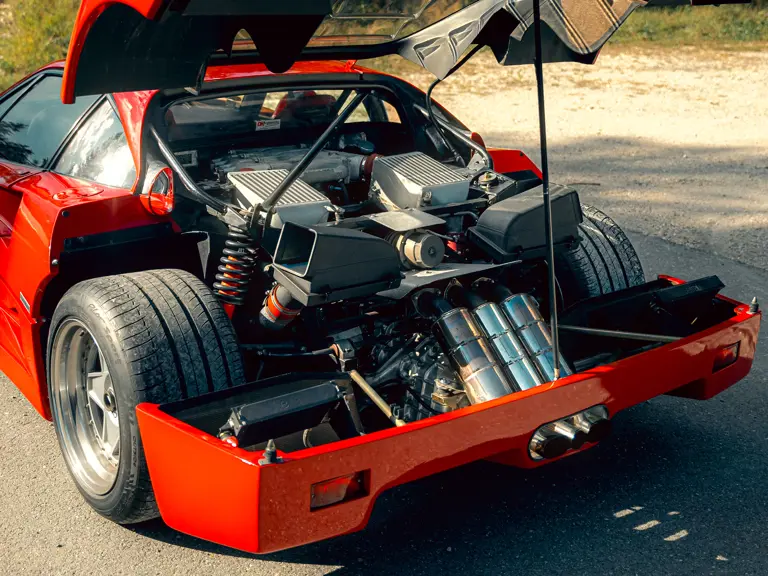


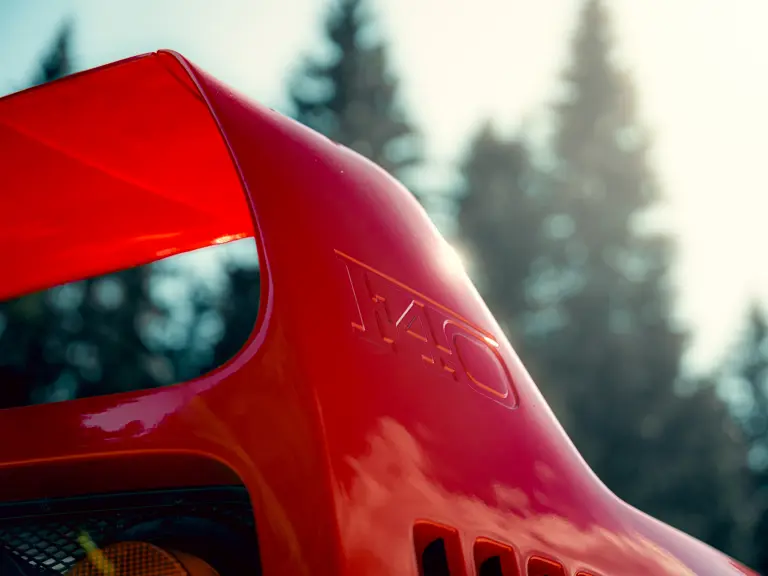
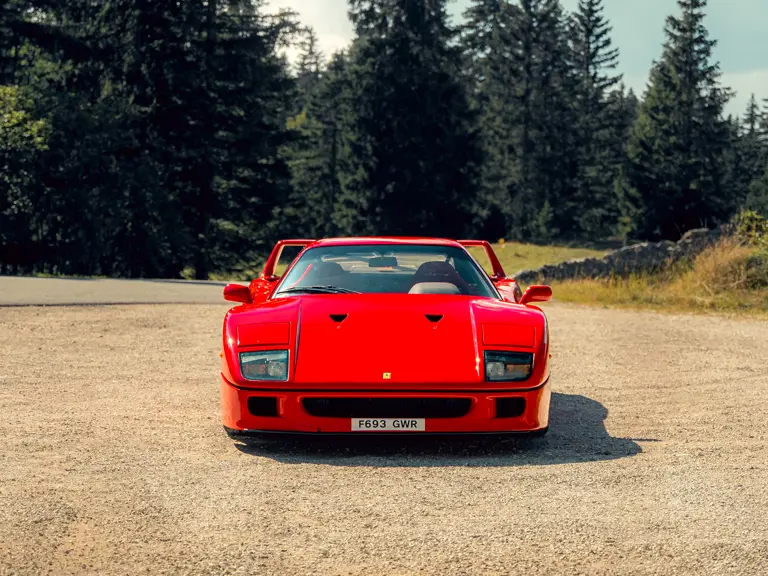
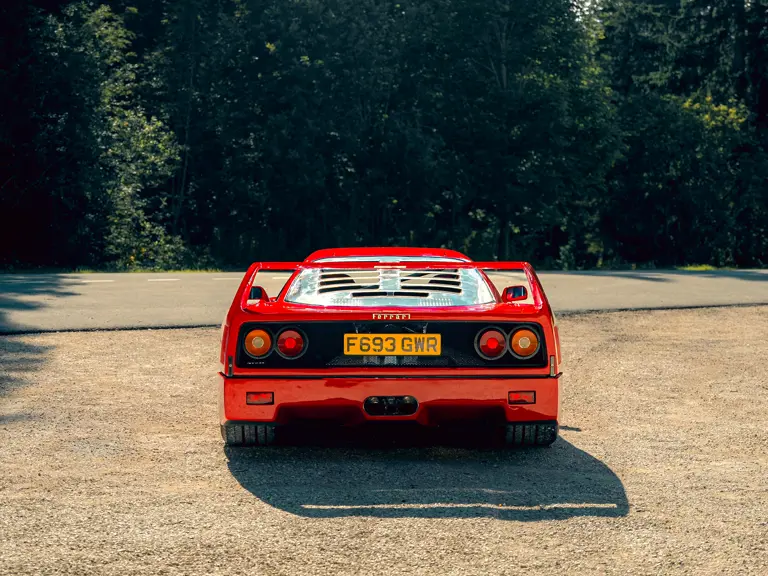

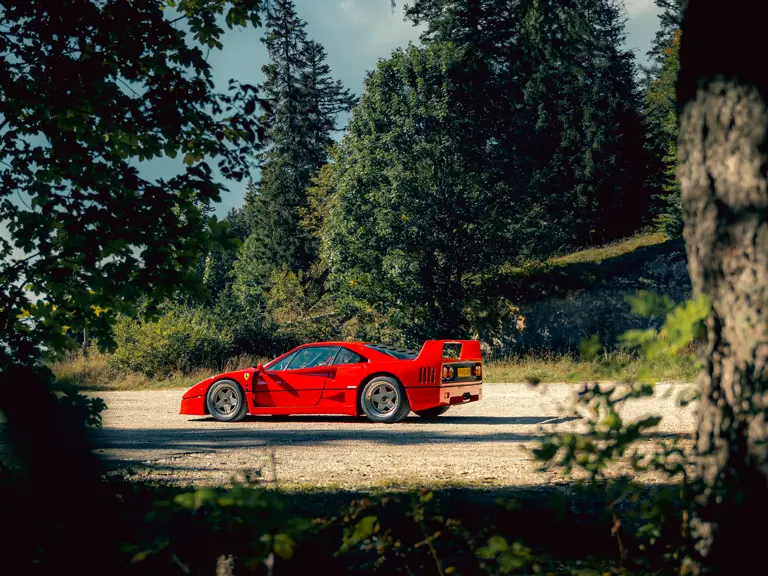
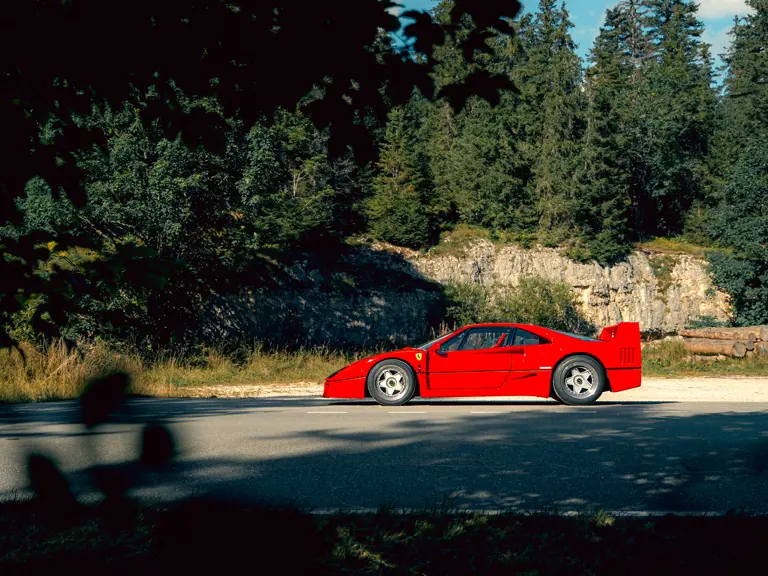

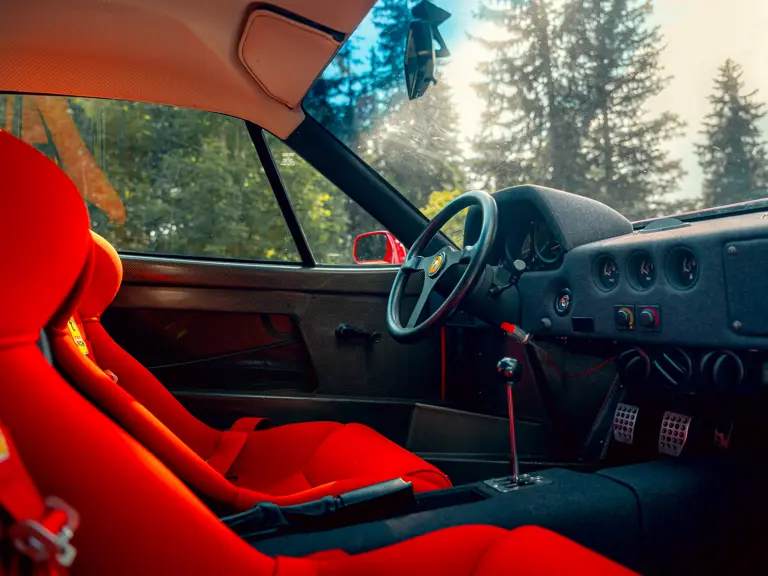
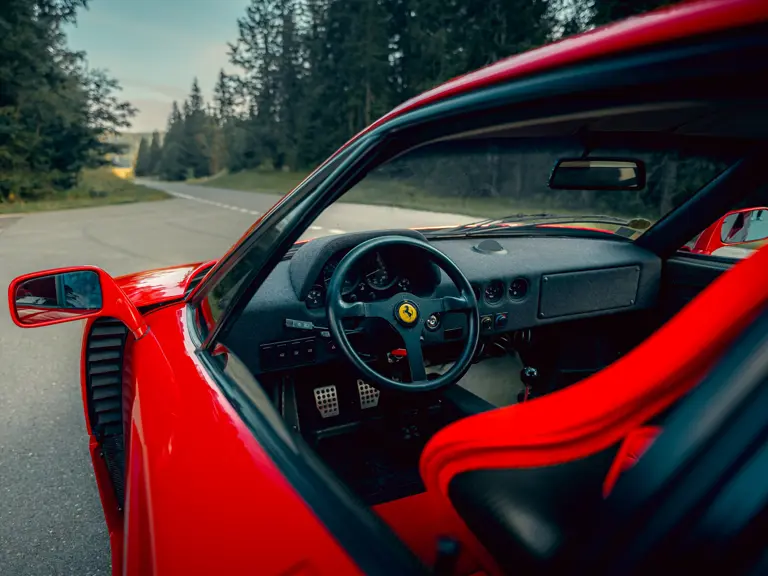

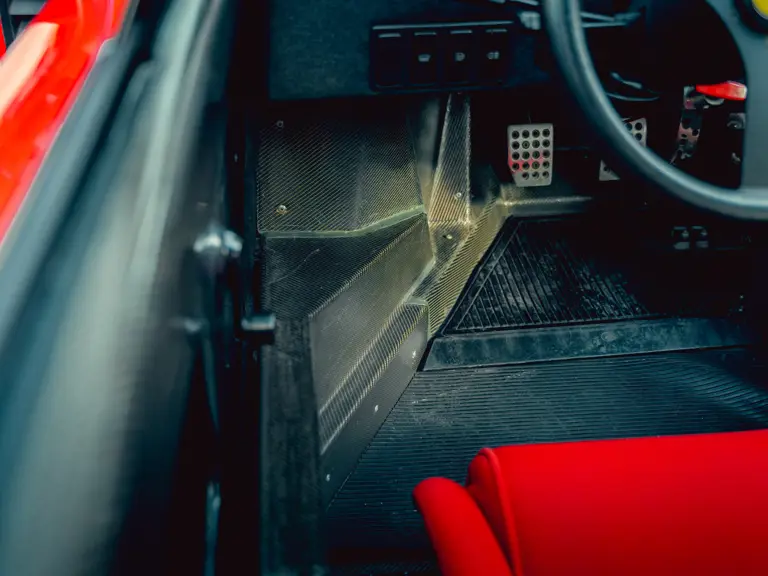

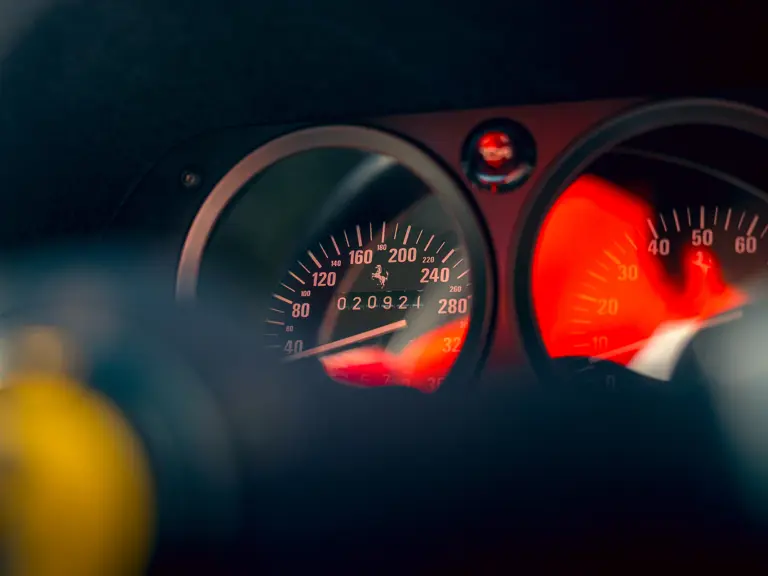

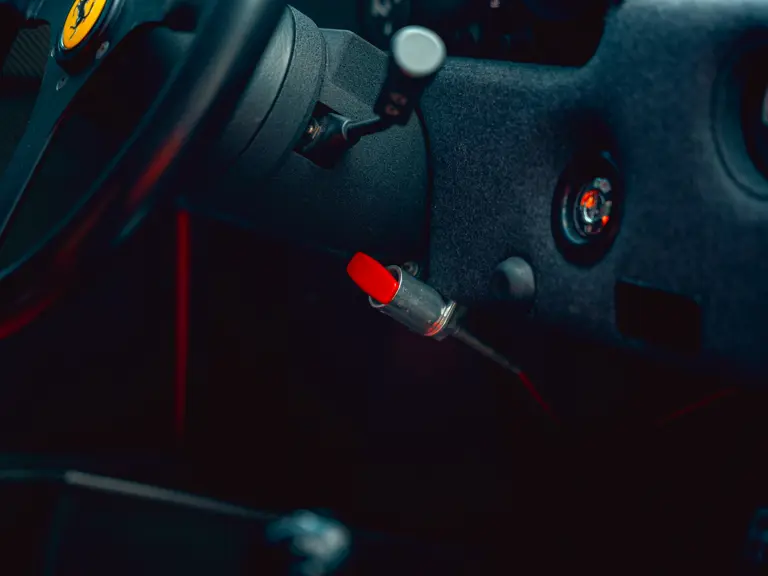

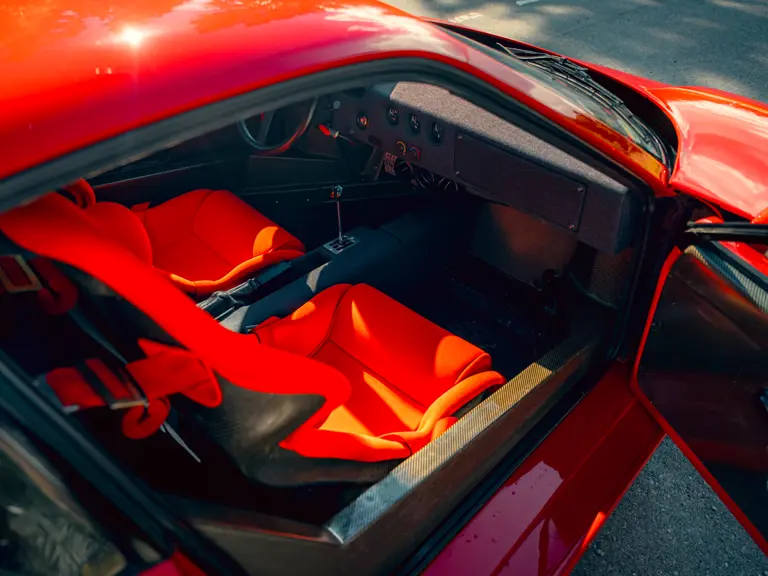

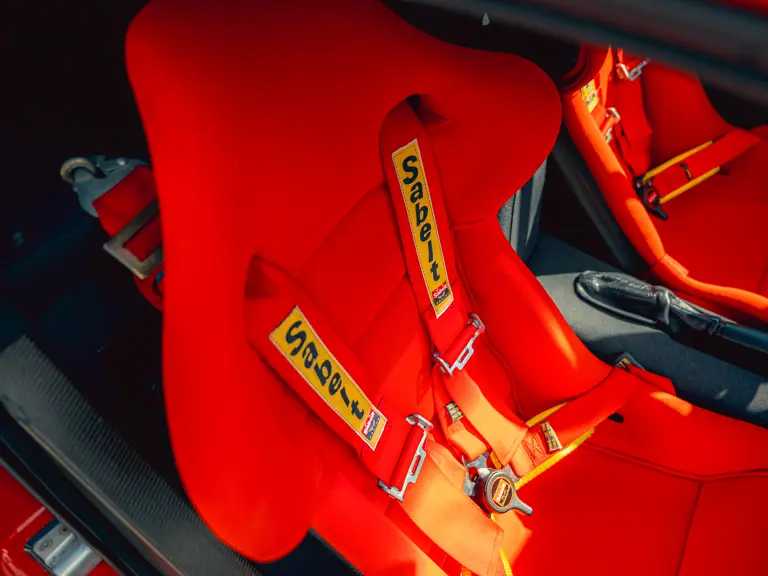


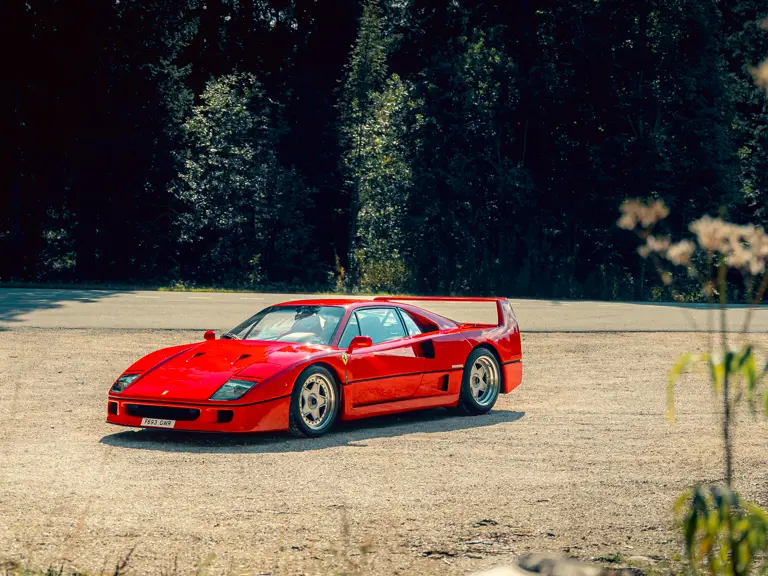
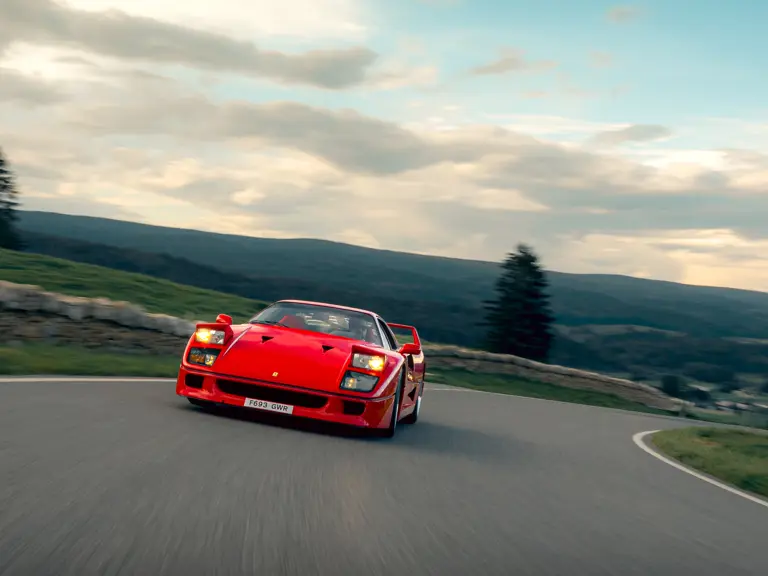

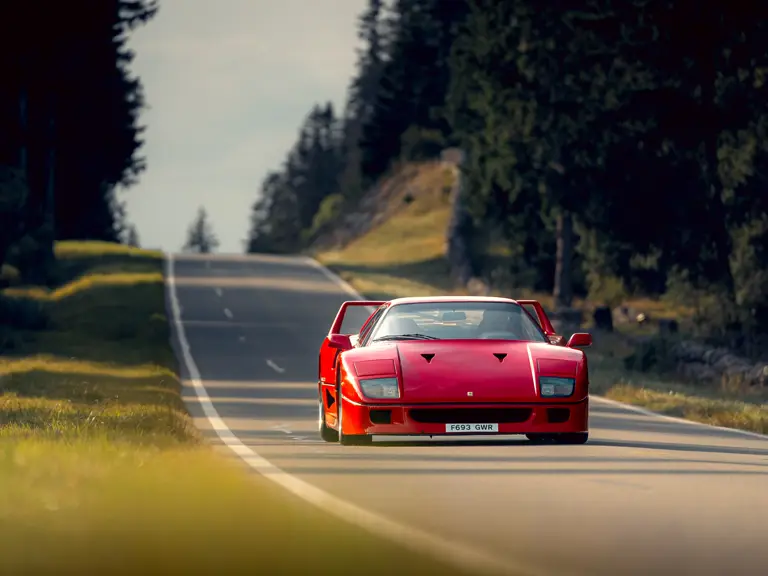

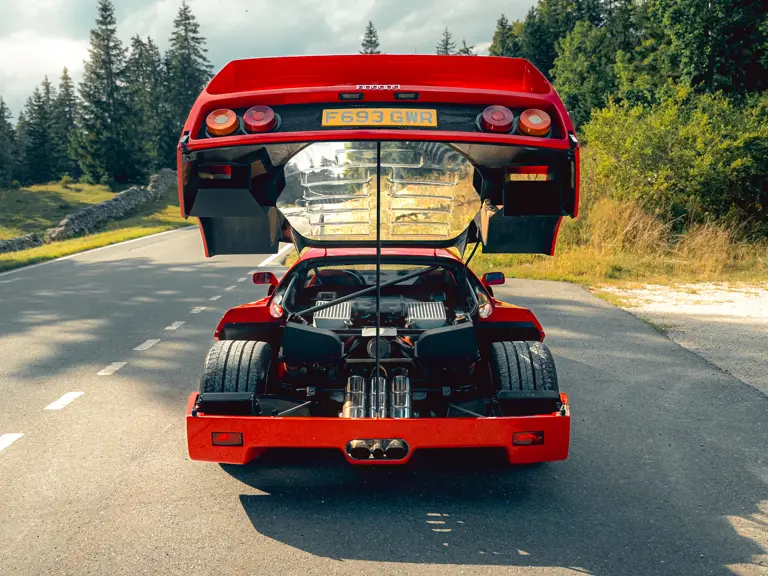
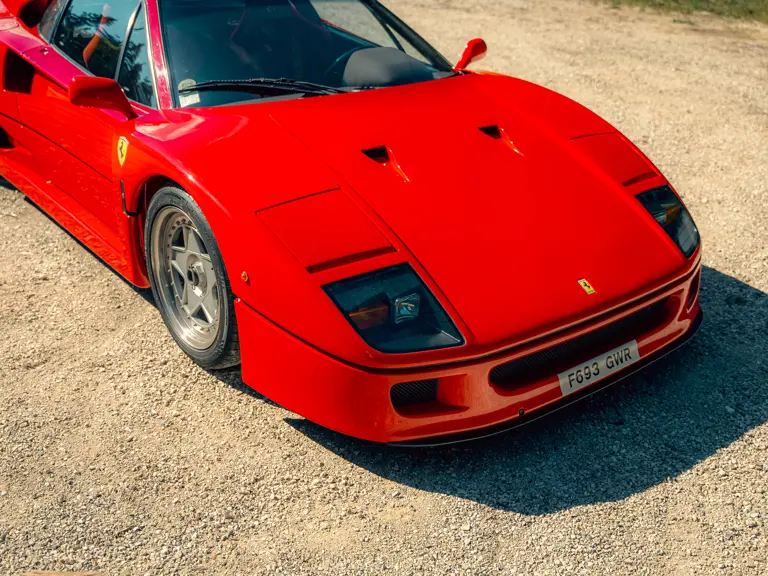
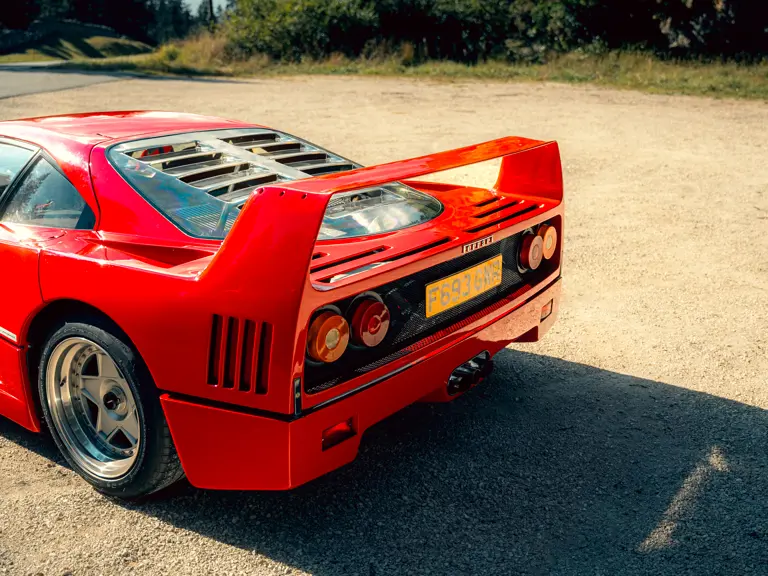
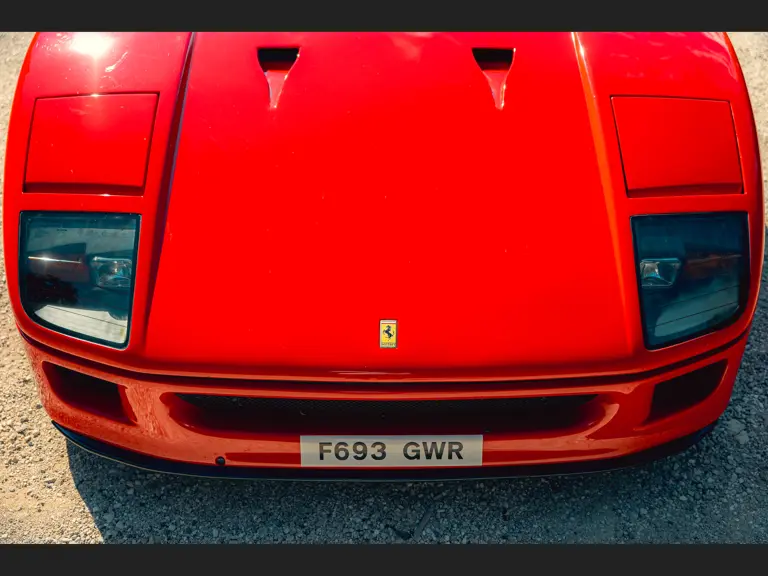




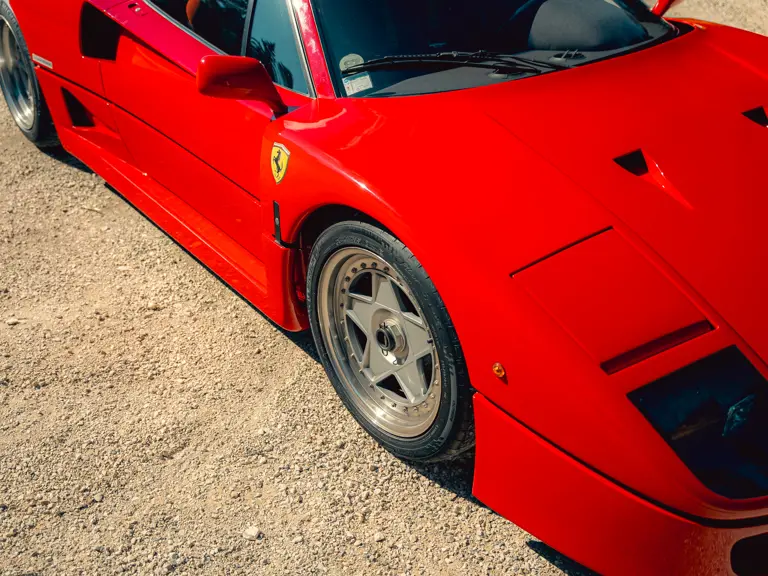




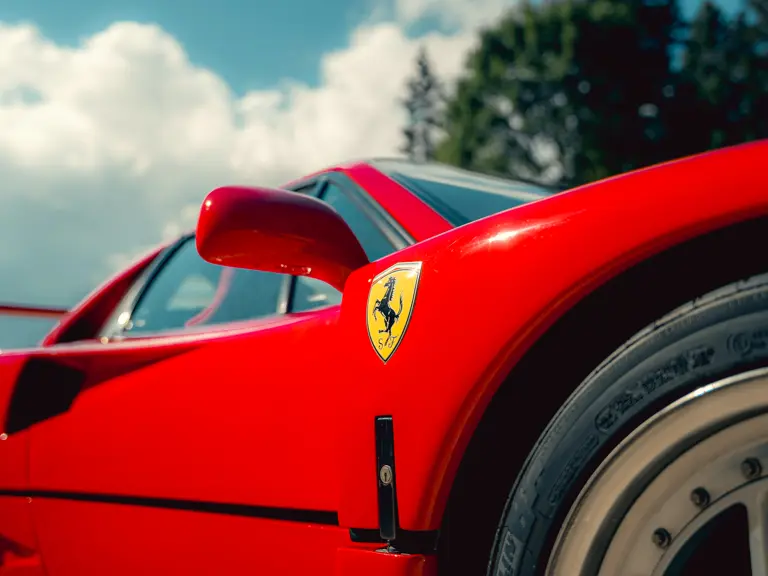



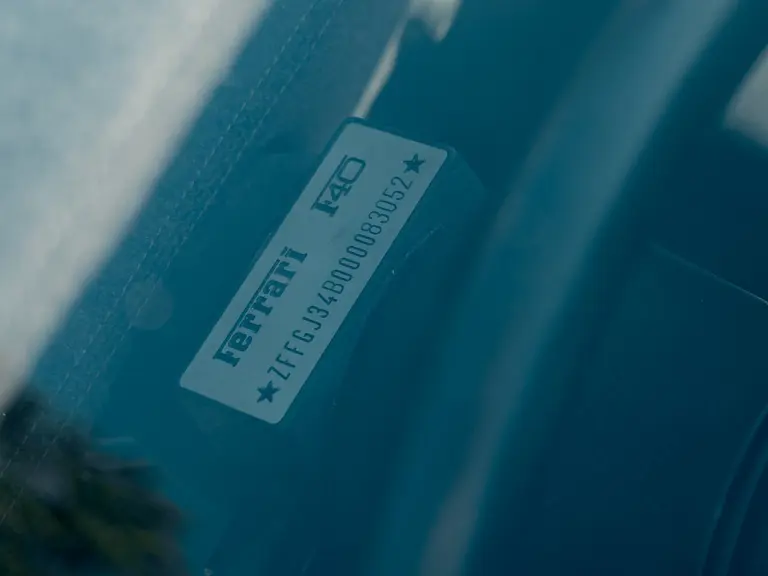




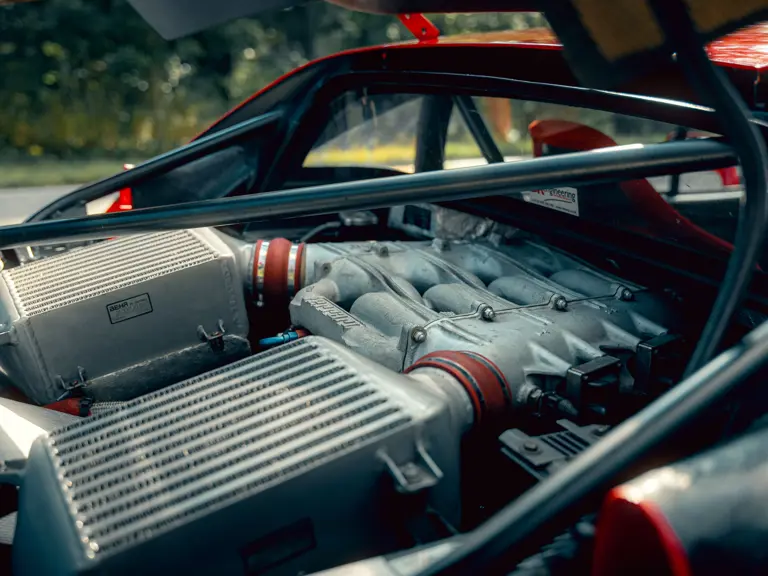
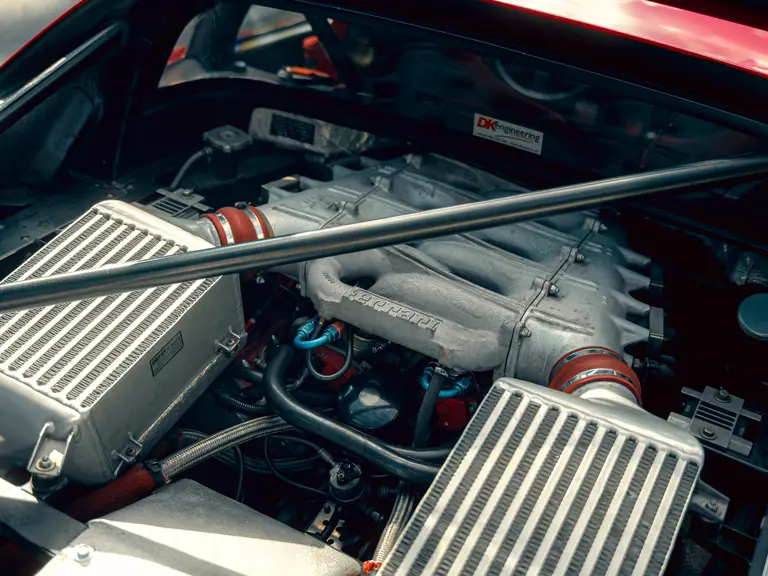





 | London, United Kingdom
| London, United Kingdom

